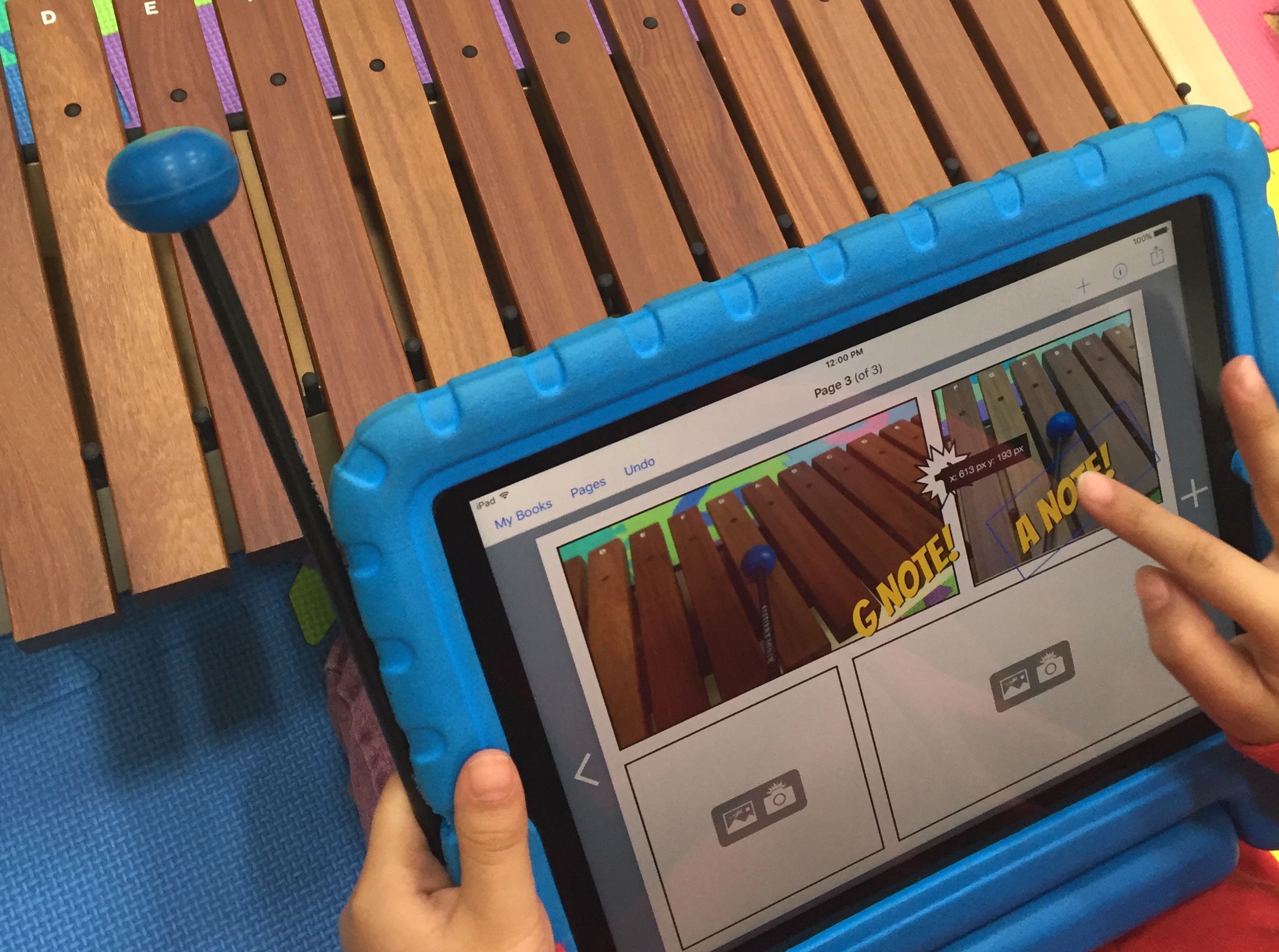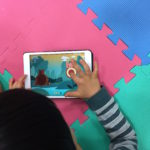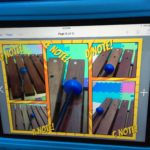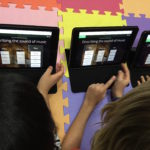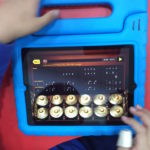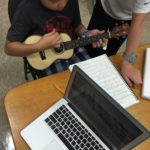This week I have been asked to develop a provocation or position around the question, ‘Do you think media-rich technology is the answer for music education?’ There is no stipulation on which technology, or whether this should be in a curricular sense or informal learning situation. In essence, I will be posing a way forward to integrate technology into music education by providing arguments from current research, known pedagogues and my own experiences.
Regardless of where the research is right now, “a classroom where everyone is learning is an exciting place to be.” (Steen, A. Exploring Orff. Schott Music, New York 1992, p7) A place where both teacher and student are engaged in discussion, creativity and discovery, is what everyone desires. And it does happen! I can recall a student-teacher I had in South Korea who was able to bring this level of learning about in senior and elementary classes. She connected with the students and technology was never a hindrance, it co-existed alongside her pedagogy. This then inspired other students to find their own connections in using technology for learning.
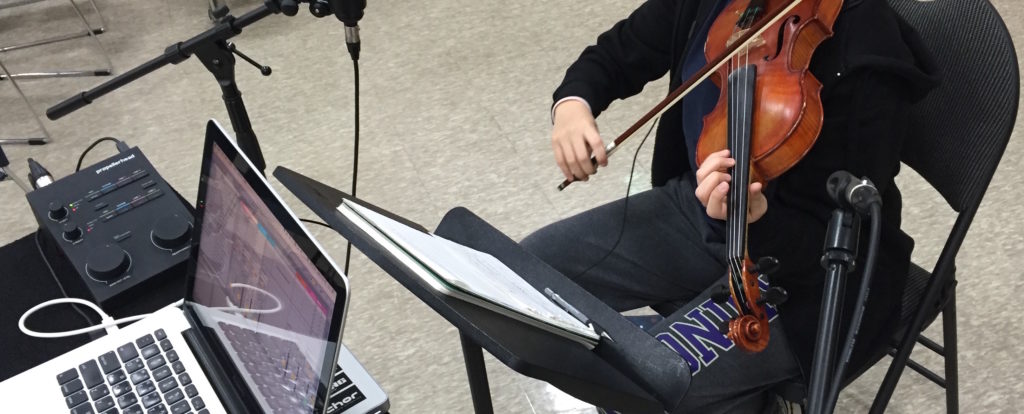
As an international educator I need to know what the research actually says about technology and student achievement, and then I need to ask, ‘which questions remain unanswered?’ to truly form my own philosophy and practice.
I begin with an article by Anya Kamenetz (NPR August 11, 2016) entitled ‘The Connections Between Computer Use and Learning Outcomes in Students.’ In this article, Anya Kamenetz summarised findings from an OECD 2015 paper that stated while “Computers are enhancing access…there’s less evidence that they’re enhancing learning.” (OECD (2015), Students, Computers and Learning: Making the Connection, PISA, OECD Publishing. accessed August 2016
Upon digging further into the paper, not only does it provide “a first-of-its-kind internationally comparative analysis of the digital skills that students have acquired, and of the learning environments designed to develop these skills…” but the “…analysis shows that the reality in our schools lags considerably behind the promise of technology.” That promise being, that it will improve teaching and learning unequivocally (my words from what I have seen and heard in schools). As a caveat, the paper also does state that there are questions raised by their research and that two possible interpretations of their findings could be that:
a) Building deep, conceptual understanding and higher-order thinking requires intensive teacher-student interactions.
b) We have not yet become good enough at the kind of pedagogies that make the most of technology; that adding 21st-century technologies to 20th-century teaching practices will just dilute the effectiveness of teaching.
– OECD (2015)
All of this is not surprising and I agree with the two possible interpretations above. For years I have held the belief that technology on its own or technology simply ‘placed’ into a learning station is not necessarily going to improve student achievement. But, if it was paired with good instruction, teacher-student interaction and ideas from both the teacher and student being realised, such as authoring original content, then there will be growth.
For example. As a music educator I need to teach students how to listen. I cannot play Mozart and expect my classes to achieve active listening status. I need to develop their skills and knowledge first. The same with the implementation of technology. I cannot hand out iPads or Laptops and expect my classes to achieve instant composer status. Lois Chosky in The Kodaly Method II, Folksongs to Mastery gives several types of listening that I believe help outline the technology issue above.
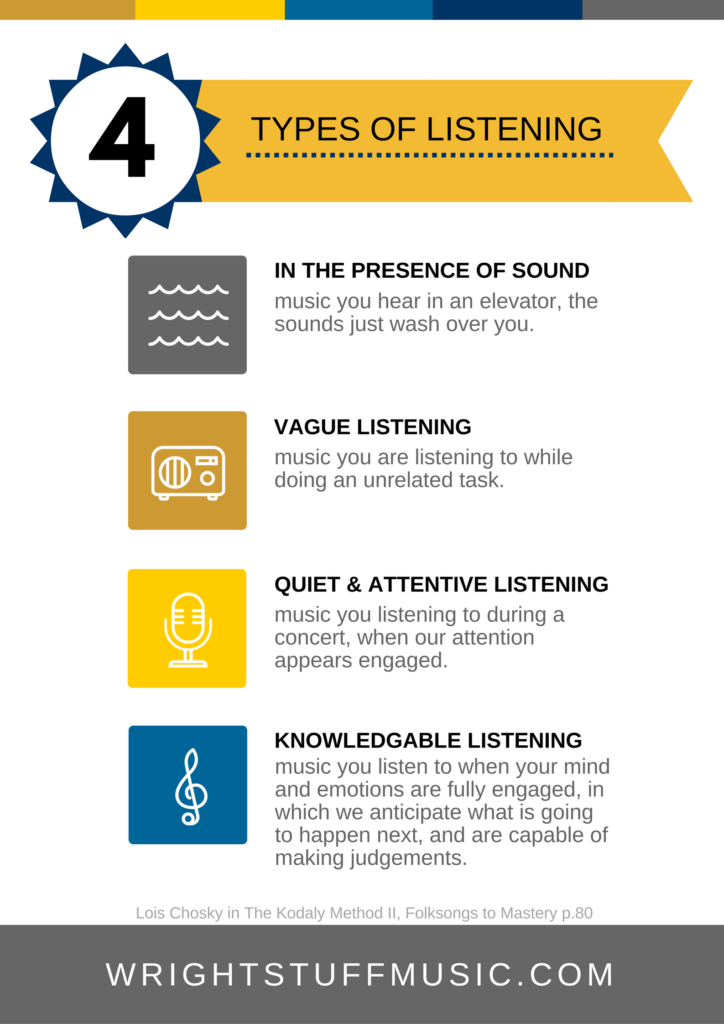
If music educators could accomplish the fourth stage of listening through good pedagogy, learning will occur. Similarly many schools could benefit from seeing the implementation of technology through the same lens.
Music educators, in reality, ask approximately three things when they enter the classroom:
1. How can I form a curriculum that addresses my students needs?
2. How can I choose the best materials for my lessons…?
3. How can I plan lessons that have a clear focus, and are also open to frequent student contributions? [emphasis mine].
(Steen, A. Exploring Orff. Schott Music, New York 1992. P8).
What if in approaching the above steps at the beginning of a school year, sans technology, actually created a pathway for meaningful technology integration later on? Do I think media-rich technology is the answer for music education? No. Instead I would argue that sound pedagogy from a teacher who embodies inquiry, allows for the integration of media-rich technology. Like the findings of the OECD paper technology access is improving but not necessarily learning. The pedagogy and teacher interaction must come first; just like my student-teacher in Korea. Then technology properly integrated will provide different ways of learning and achieving.
This does not alienate technology, it just places it within the realm of ideas and creativity that would come up during classroom discussions or planning.
“Techniques do not stir the imagination; sofa and ti-ta’s never set anybody on fire; pedagogical processes do not give excitement and purpose to life. Ideas do.” (Chosky, L The Kodaly Method II, Folksongs to Mastery. Prentice Hall Inc, New Jersey 1999. Preface).
I am a big advocate of technology in education as we would not have some music today, were it not for technology. The composer Bela Bartok “…carried small-format music note-books on his folksong collecting trips. After some investigation of the available material [emphasis mine], he notated the melodies worthy of collecting…More often, however, he also made phonograph recordings of the melodies [while still notating them]. The use of the phonograph was introduced into ethnographic field work in the late nineteenth century because of its evident advantages…” (Lampert, V. Folk Music in Bartok’s Compositions. Hungarian Heritage House, Budapest 2008. pp16-17).
Let me outline two examples that show the advantages of technology but also require a teacher to instruct good listening through skills and and knowledge first. This will reinforce my argument that pedagogy must come first and technology can be included in the journey for learning.
A student at a presentation I did in Beijing brought his guitar to record some ideas he had been jamming on. Within 5 minutes we recorded his playing, added drums, played in the keyboard progression and fine tuned the phrasing of his solos. This use of technology merely outlined the listening and analysis skills he had already developed, and gave it a creative output.
Lois Chosky in The Kodaly Method II, Folksongs to Mastery illustrates a cycle for approaching teaching “…through consistent shaping of lessons, always beginning with the familiar, moving to the new and challenging, and closing with the familiar.”(p24) This is exactly the type of framework that could allow almost any type of technology to co-exist within music education.
Example Two outlines my grade 5’s investigation of Composing to Fairytales. Through playing on xylophones, singing, notating by hand and experimenting through improvisation the students helped create a media-rich iTunesU Course of their journey. It was only once they had begun to move through the ‘new and challenging’ stage that they found composing on the iPad possible or even relevant. The entire process brought them full-circle to apply their listening skills to more advanced repertoire, this time with understanding.

To finish, I believe, Music Education needs to have a strong foundation in a proven pedagogy such as Orff and Kodaly to establish solid practices of listening, singing, composing and performing. Technology then has a pathway of coexisting within a lesson, a task or a project, that could lead students to further learning opportunities and creative achievements.
